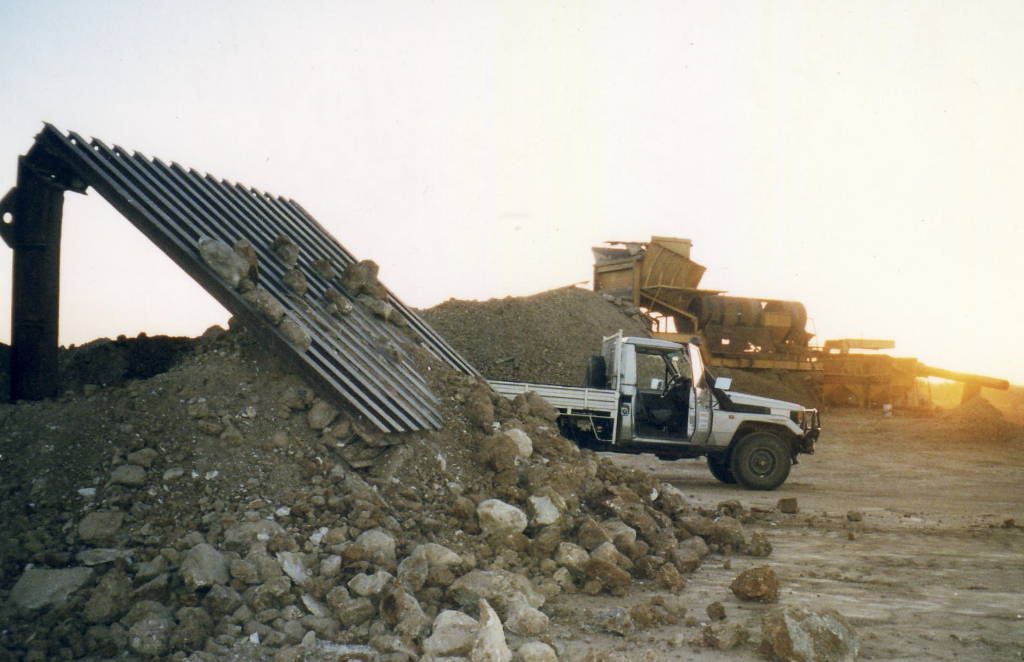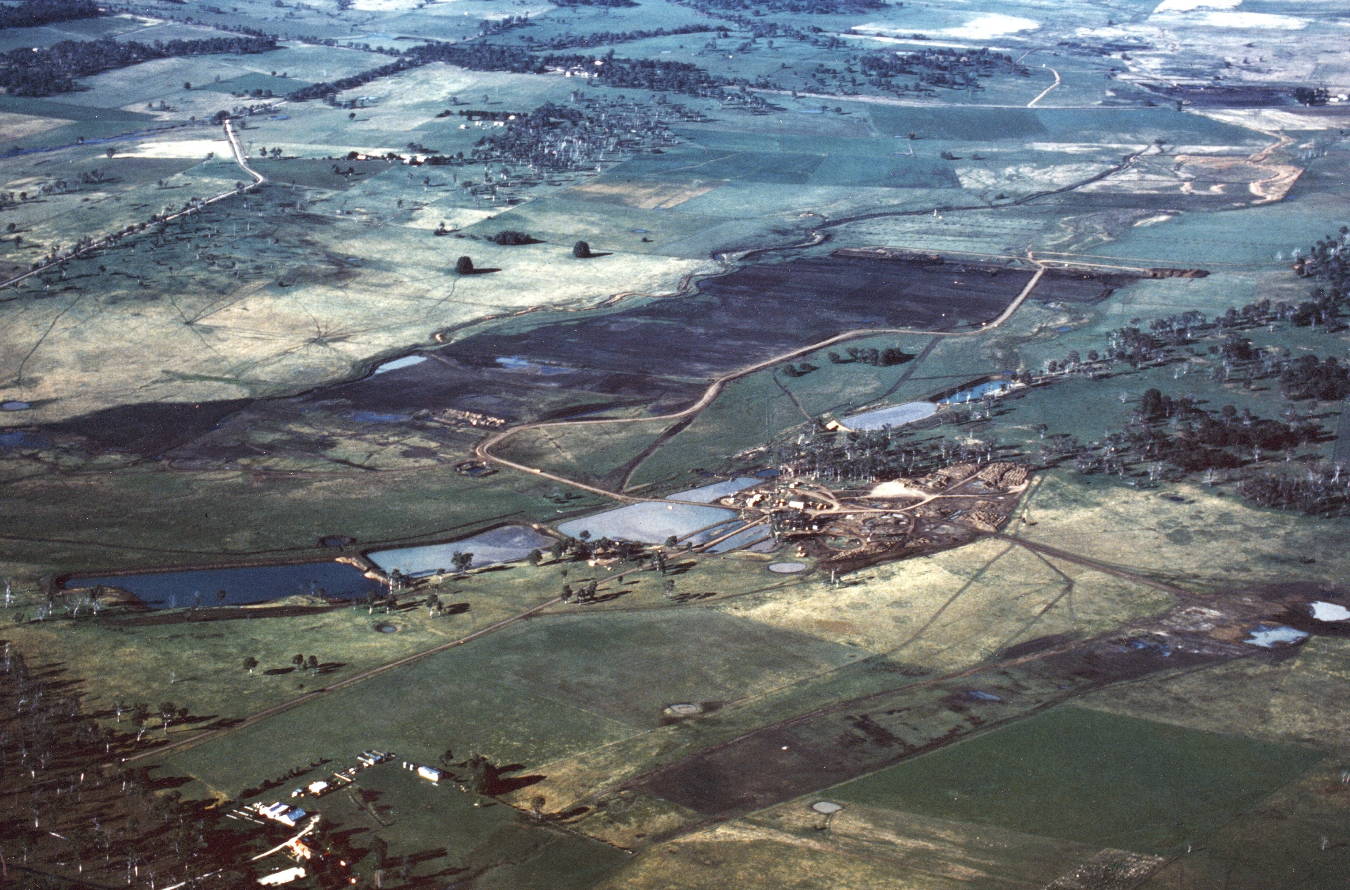Blue Gold: The Sustainable Future of Australian Sapphire Mining
Australian sapphires are in demand for all sorts of reasons.
Beauty and quality spring to mind, but it’s much more than that. Behind the aesthetics is a great example of how mining can be ethical and sustainable. And that isn’t something you can be sure of when buying sapphires from other regions around the globe.
With smart practices and innovative technologies, mining companies can safeguard the environment, minimise water use, and provide employment and tourism to benefit local communities.
Australia produces more commercial-grade blue sapphires than anywhere else, which means we have a commitment to Planet Earth by leading the way in the gem mining industry. Let’s take a look at how our country honours that commitment.
The legacy of Australian sapphires
Australian sapphires stand out for their individuality. Typically, an Australian sapphire is a dark blue-green shade with strong colour zoning. The country is also known for its production of parti-sapphires, a rare mix of green, blue and yellow.
Throughout history, locally-grown sapphires have been recognised on a global scale. You might have heard of the Black Star of Queensland. This stone was found in the Gemfields, QLD, by a 12-year-old boy, who first thought it was a “great lump of coal” before taking it home to use as a doorstop. It’s now estimated to be worth around $100 million and has been worn by Cher.
Another famous, deep blue sapphire was found in the same area, pretty much by mistake. A woman stubbed her toe on a stone “the size of a turkey’s egg”. It turned out to be a sapphire which reportedly weighed nearly 2000 carats uncut. It was eventually purchased by LA jewellers, the Kazanjian brothers, who cut it into a replica of Abraham Lincoln’s head.
A snapshot into the history of Australian sapphires:
1850s: Gold miners in NSW first discovered sapphires
1870s: More discoveries take place and commercial mining begins on a small scale
1900s-1920s: Mining operations expand and gem-quality sapphires are discovered in areas like Rubyvale, Sapphire, and Glenalmond in Central Queensland
1960s: Post-war, there’s an increase in demand for gemstones, and Australian sapphires gain international recognition
1970s: Extraction gets more efficient thanks to the introduction of machinery like bulldozers and dredges (which help extract gems from water)
1980s: A growth in environmental awareness shapes more sustainable mining practices
1990s: More technical mining techniques, like high-pressure water jets to wash gem-bearing gravel, are introduced
2010s to present: There’s an increased emphasis on ethical mining practices, with certifications and traceability becoming central to the industry
Australia’s primary mining regions
Central Queensland Gemfields
Home to places like Anakie, Rubyvale and Sapphire, Gemfields have been central to Australia’s sapphire operations since the 19th century.
Today, the region is famous for producing sapphires in a rainbow of colours, and is open to hobbyists who want to try their luck at sapphire fossicking.


New South Wales deposits
The New England region of NSW is made up of towns including Inverell and Glen Innes.
The area is well-known for its variety of rich, blue sapphires (an Aussie staple) although it’s also known to produce other colours, too.
Sapphire mining here also dates back to the 19th century, when sapphires were accidentally discovered by gold miners.
Traditional environmental challenges
Traditionally, mining hasn’t done the environment much good. Some potential ways old-school mining impacted the planet include:
- Land degradation: Extractions carried out during mining can impact the local environment before, during and after operations. Heavy machinery can damage the earth’s surface, leading to soil erosion and degradation.
- Water usage: From washing to sorting and cleaning gravels, a significant amount of water is used in sapphire processing. This, along with the risk of water pollution, is a concern in areas of ongoing mining - especially for drought-prone spots.
- Ecosystem disruption: Mining sometimes leads to deforestation, which impacts local wildlife and biodiversity. Since mining also produces fossil fuels, it can contribute to climate change, if the impacts aren’t managed.
Metals and minerals, extracted by mining companies, contribute to almost 70% of Australia’s export revenue. The industry is vital, but its effects on the environment couldn’t be ignored.
More recently, modern solutions have been created to reduce negative impacts, so people and the planet can benefit from operations.
Modern solutions and sustainable sapphire mining practices
1. Technologies and innovations
Advanced water management systems
As the driest inhabited continent on earth, sustainable water use and the elimination of water pollution have become a key focus across the industry. And for 80% of the Australian mining sector, sustainable water management is a leading priority.
Innovations like SMART water dosing have been introduced to support a healthy water supply. This technology manages water flow to stop wastage, reducing the required amount of water by as much as 50%.
Water recycling methods
Companies are combating water waste by recycling water across mining processes. Some are working towards zero liquid discharge mines. This means no wastewater, which can contain harmful contaminants, gets discharged into the environment
Another method making water use more sustainable involves the use of “poor-grade water”. This is underground or seawater that isn’t suitable for agricultural and municipal purposes. Instead of wasting this, it goes to the mines instead of fresh water.
In some regions (especially those prone to droughts) the daily supply of water to mines is limited.
Erosion control measures
There are simple yet smart ways to minimise the effects erosion (wearing down) has on the landscape. Erosion control blankets, for example, are biodegradable blankets that protect the environment and can encourage revegetation.
2. Environmental management systems
Soil preservation techniques:
When topsoil is removed, it gets preserved and its position is recorded, so it can be restored once mining is complete.
On the same note, once sapphires are removed from the gravel, the gravel is put back into place, followed by soil and topsoil. Any native plants are then replanted, so the environment can return to its natural state.
Rehabilitation plans:
Rehabilitation plans for mined areas are put in place, with a vision to restore the land to its previous state once operations come to an end.
This helps to control the industry’s environmental footprint and contribute to the long-term health of the ecosystem.
The circular economy:
Ongoing recycling makes the waste of one industry usable in another.
In mining in Australia, waste rock is regularly transformed into resources for the construction and agriculture sectors.
3. Certification and compliance
Developed in 2004, this agreement covers rights and interests over land and waters that have been established through traditional Aboriginal laws and customs.
Ultimately, it enabled direct negotiations between miners and Indigenous landowners, so the needs of the landowners could be taken into account.
The Environment Protection and Biodiversity Conservation Act 1999
This is the Australian Government’s environmental legislation.
Any mining activities that could impact the environment are likely to require approval under this law. It was put in place to manage the country’s environment, biodiversity and heritage.
What's the impact of mining on the community?
Since local communities should benefit from the mining activities that take place on their doorstep, initiatives have been put in place. The goal of these initiatives is to positively impact local communities and economies in a number of ways.
1. Local economic development
The mining industry, on the whole, creates jobs. The sector employed around 219,000 people in Australia in 2023. In sapphire mining, people can become miners or cutters. In some regions, they only need some hand tools to find gems, and in many cases, people can simply pick up gems from the ground - which is as ethical as it gets!
2. Indigenous community engagement
Sapphire mining companies work with local communities to uncover ways to benefit them. They prioritise jobs for local people, offer training to enhance skills, and support local community movements around education, health and social welfare. Investments also go to infrastructure development, which benefits mines and local communities, while keeping sacred sites protected.
3. Tourism development
Activities like sapphire fossicking and mine visits attract tourists looking for fun, different activities. Australia’s biggest underground walk-in sapphire mine, Miner’s Heritage, is located in Rubyvale. Guided tours are on offer and visitors can learn about incredible sapphires found over the years, and can fossick for their own gems. These tourist attractions can also do some good for local cafes, hotels, shops and restaurants.
Looking to the future...
It’s no secret that Australia’s sapphire mining industry has faced challenges over the years, from labour shortages to technology limitations that impacted productivity.
In preparation for the future, modern equipment, better education, and mechanised mining techniques have been developed. These elements improve efficiency and make it possible for miners to reach deeper deposits, to increase the sapphire yield.
Over time, the industry adapted to the world’s demands for more ethical sourcing, and pro-environmental laws have been put in place with government support. Australia now has an exceptional reputation, providing peace of mind that sapphire collectors are buying high-quality, responsibly mined stones.
That’s why sapphire mining in Australia continues to thrive - and the future looks bright.
Right now, mining company FURA contributes to nearly 80% of the country’s sapphire production. The company is committed to using advanced technology for socially, economically and environmentally responsible operations, so our world-leading sapphire industry is in great hands.
Choose ethically and sustainably-mined sapphires
Australian sapphire mining is creating a blueprint for an industry where sustainability and success work in harmony.
Here at Sapphire Dreams, we’re proud to say FURA is our supplier, so our customers can count on ethical gemstones that are among the world’s most beautiful.
If you care about collecting or wearing sapphire jewellery from a place where sustainability is more than just a buzzword, browse our collection.

